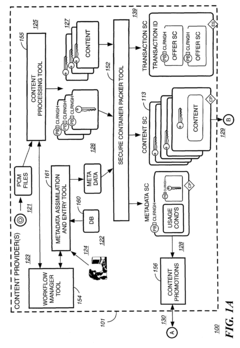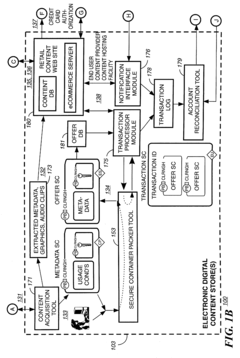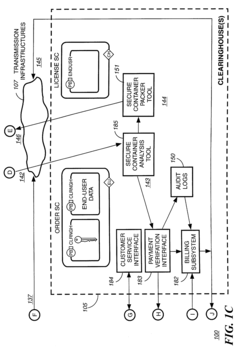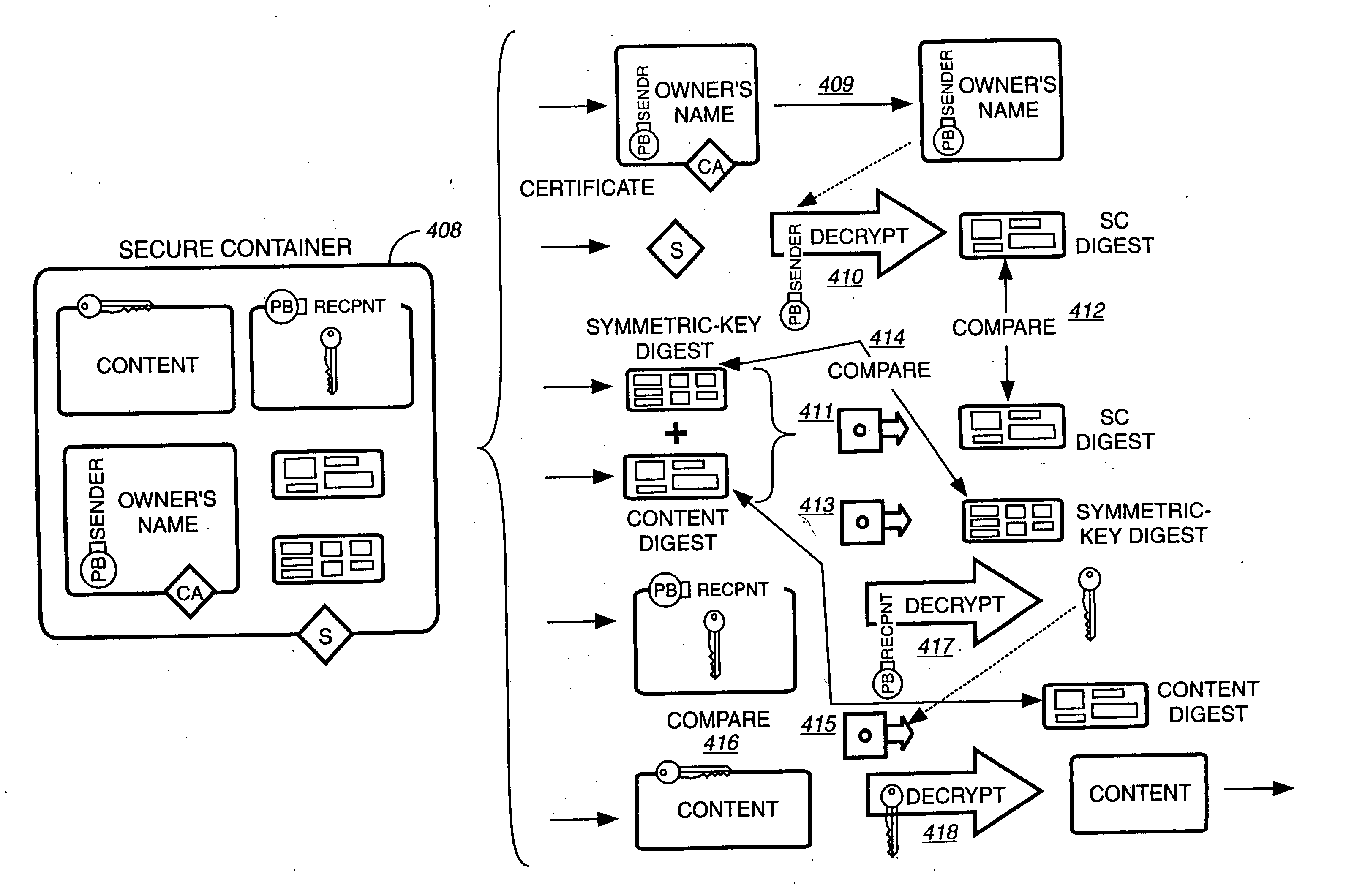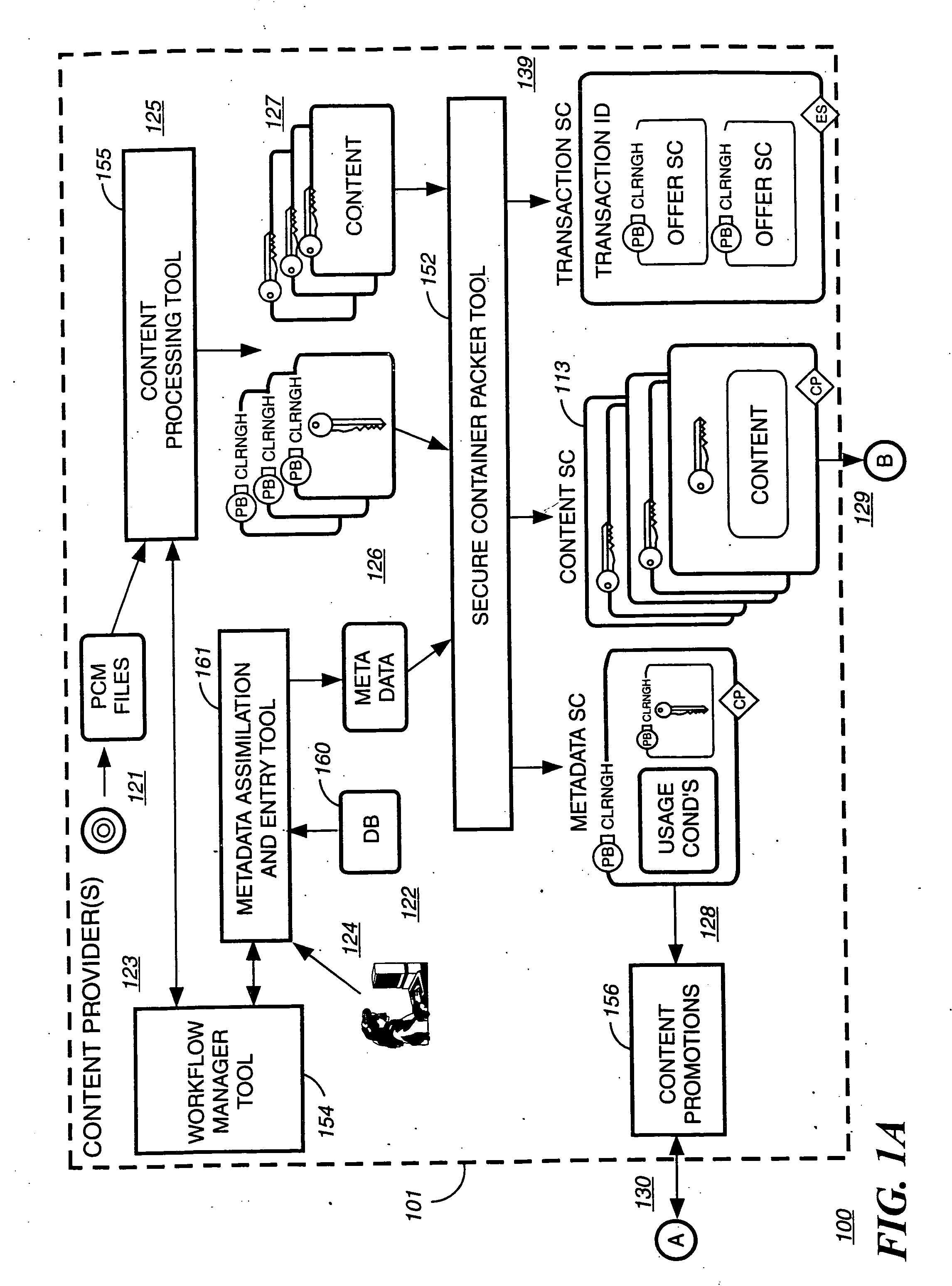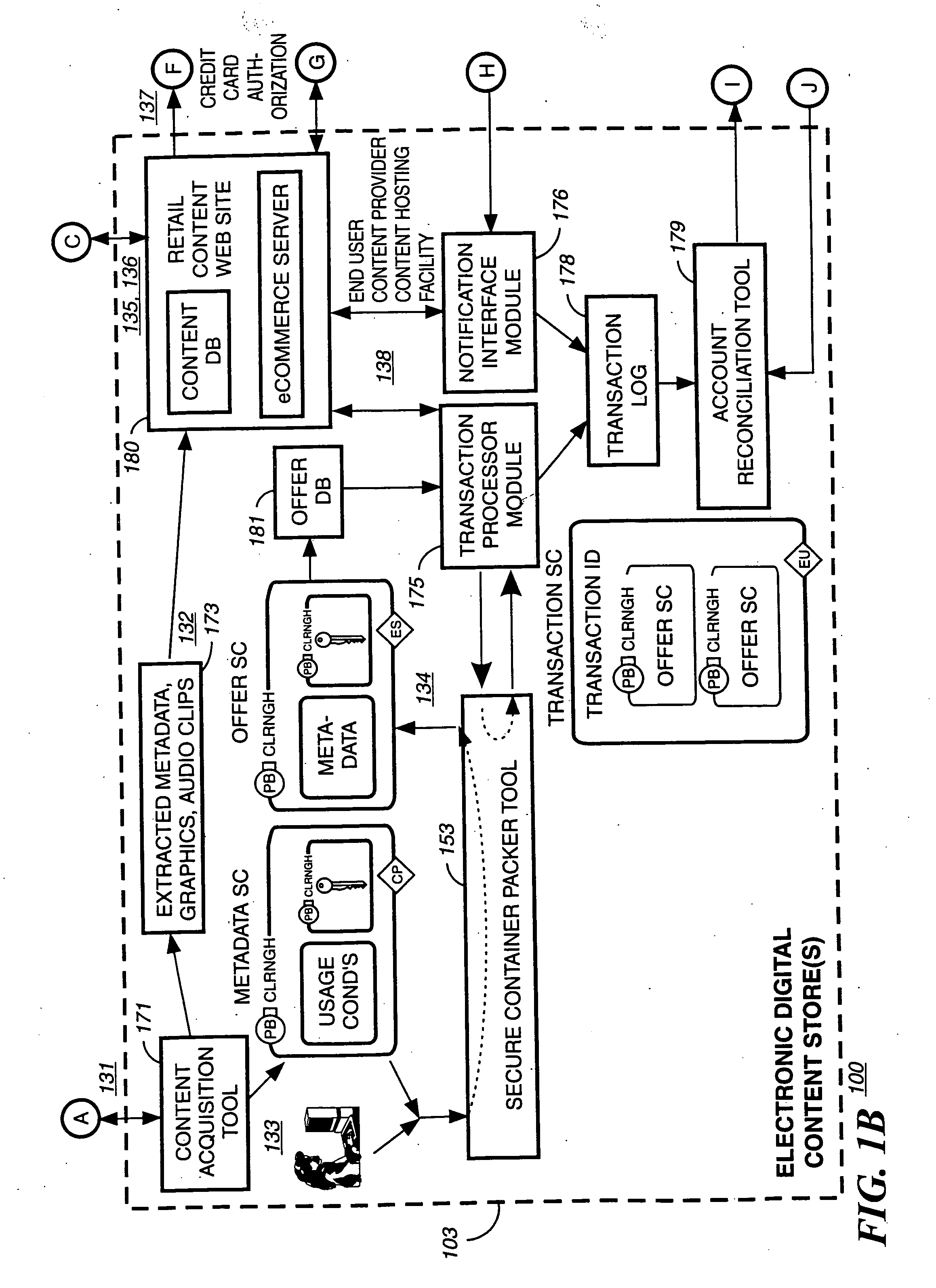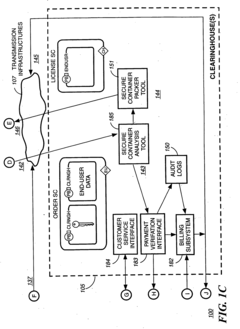How Dolby Vision Benefits Digital Content Distribution
JUL 30, 20258 MIN READ
Generate Your Research Report Instantly with AI Agent
Patsnap Eureka helps you evaluate technical feasibility & market potential.
Dolby Vision Evolution
Dolby Vision has undergone significant evolution since its introduction in 2014, marking a transformative journey in the realm of digital content distribution. Initially developed as a high dynamic range (HDR) imaging technology, Dolby Vision has continuously expanded its capabilities and applications, adapting to the changing landscape of content creation and consumption.
In its early stages, Dolby Vision focused primarily on enhancing the visual experience in cinema and high-end home entertainment systems. The technology introduced the concept of dynamic metadata, allowing for frame-by-frame optimization of brightness, color, and contrast. This breakthrough enabled content creators to deliver their artistic vision with unprecedented accuracy across various display devices.
As the technology matured, Dolby Vision expanded its reach beyond traditional cinema and home theater environments. The introduction of Dolby Vision for mobile devices in 2017 marked a significant milestone, bringing HDR capabilities to smartphones and tablets. This expansion democratized access to high-quality visual experiences, allowing consumers to enjoy premium content on the go.
The evolution of Dolby Vision also saw the development of more efficient encoding and delivery methods. The introduction of Dolby Vision Profile 8.4 in 2020 streamlined the content creation workflow, enabling single-stream delivery of both HDR and SDR content. This advancement significantly reduced bandwidth requirements and simplified distribution processes for content providers.
In recent years, Dolby Vision has embraced the growing trend of user-generated content. The technology has been integrated into consumer-grade cameras and editing software, empowering creators to produce and distribute HDR content with professional-level quality. This democratization of high-quality content creation has had a profound impact on social media platforms and streaming services.
The technology's evolution has also been marked by its integration with other cutting-edge technologies. Dolby Vision IQ, introduced in 2020, combines HDR imaging with ambient light sensors in displays, automatically adjusting picture settings based on the viewing environment. This adaptive approach ensures optimal viewing experiences across various lighting conditions, further enhancing content distribution flexibility.
As Dolby Vision continues to evolve, it is increasingly focusing on interoperability and standardization. Efforts to align with other HDR formats and industry standards have improved compatibility across different devices and platforms. This ongoing evolution ensures that Dolby Vision remains at the forefront of digital content distribution, continually adapting to new technologies and consumer expectations in the ever-changing digital landscape.
In its early stages, Dolby Vision focused primarily on enhancing the visual experience in cinema and high-end home entertainment systems. The technology introduced the concept of dynamic metadata, allowing for frame-by-frame optimization of brightness, color, and contrast. This breakthrough enabled content creators to deliver their artistic vision with unprecedented accuracy across various display devices.
As the technology matured, Dolby Vision expanded its reach beyond traditional cinema and home theater environments. The introduction of Dolby Vision for mobile devices in 2017 marked a significant milestone, bringing HDR capabilities to smartphones and tablets. This expansion democratized access to high-quality visual experiences, allowing consumers to enjoy premium content on the go.
The evolution of Dolby Vision also saw the development of more efficient encoding and delivery methods. The introduction of Dolby Vision Profile 8.4 in 2020 streamlined the content creation workflow, enabling single-stream delivery of both HDR and SDR content. This advancement significantly reduced bandwidth requirements and simplified distribution processes for content providers.
In recent years, Dolby Vision has embraced the growing trend of user-generated content. The technology has been integrated into consumer-grade cameras and editing software, empowering creators to produce and distribute HDR content with professional-level quality. This democratization of high-quality content creation has had a profound impact on social media platforms and streaming services.
The technology's evolution has also been marked by its integration with other cutting-edge technologies. Dolby Vision IQ, introduced in 2020, combines HDR imaging with ambient light sensors in displays, automatically adjusting picture settings based on the viewing environment. This adaptive approach ensures optimal viewing experiences across various lighting conditions, further enhancing content distribution flexibility.
As Dolby Vision continues to evolve, it is increasingly focusing on interoperability and standardization. Efforts to align with other HDR formats and industry standards have improved compatibility across different devices and platforms. This ongoing evolution ensures that Dolby Vision remains at the forefront of digital content distribution, continually adapting to new technologies and consumer expectations in the ever-changing digital landscape.
Market Demand Analysis
The market demand for Dolby Vision in digital content distribution has been steadily increasing, driven by the growing consumer appetite for high-quality visual experiences across various platforms. As streaming services and digital content providers compete for viewer attention, the adoption of advanced HDR technologies like Dolby Vision has become a key differentiator in the market.
Consumer expectations for premium content have risen significantly, with viewers demanding more immersive and lifelike visual experiences. This trend has been particularly evident in the home entertainment sector, where large-screen 4K and 8K TVs capable of displaying HDR content have gained popularity. Dolby Vision's ability to deliver enhanced contrast, brightness, and color accuracy aligns perfectly with these consumer demands, making it an attractive feature for content distributors.
The film and television industry has also recognized the value of Dolby Vision in preserving creative intent. Directors and cinematographers are increasingly utilizing HDR technologies during production to capture a wider range of colors and luminance levels. This has created a ripple effect in the distribution chain, as streaming platforms and broadcasters seek to deliver this high-quality content to end-users without compromising the original vision.
The gaming industry has emerged as another significant driver of Dolby Vision demand. With next-generation consoles and gaming PCs supporting HDR, game developers are leveraging Dolby Vision to create more visually stunning and immersive gaming experiences. This has led to increased interest from game distribution platforms in supporting Dolby Vision content delivery.
Mobile devices have also contributed to the growing market for Dolby Vision. As smartphones and tablets become more capable of displaying HDR content, there is an increasing demand for Dolby Vision-enabled streaming apps and content optimized for these devices. This mobile segment represents a substantial growth opportunity for digital content distributors.
The COVID-19 pandemic has further accelerated the demand for high-quality home entertainment options, including Dolby Vision content. With more people spending time at home, the value proposition of premium visual experiences has become even more compelling, leading to increased adoption of Dolby Vision-compatible devices and a corresponding rise in demand for compatible content.
As the ecosystem of Dolby Vision-enabled devices continues to expand, content distributors are finding it increasingly important to offer Dolby Vision as part of their service to remain competitive. This has created a positive feedback loop, where the availability of more Dolby Vision content drives further adoption of compatible devices, which in turn increases the demand for more content.
Consumer expectations for premium content have risen significantly, with viewers demanding more immersive and lifelike visual experiences. This trend has been particularly evident in the home entertainment sector, where large-screen 4K and 8K TVs capable of displaying HDR content have gained popularity. Dolby Vision's ability to deliver enhanced contrast, brightness, and color accuracy aligns perfectly with these consumer demands, making it an attractive feature for content distributors.
The film and television industry has also recognized the value of Dolby Vision in preserving creative intent. Directors and cinematographers are increasingly utilizing HDR technologies during production to capture a wider range of colors and luminance levels. This has created a ripple effect in the distribution chain, as streaming platforms and broadcasters seek to deliver this high-quality content to end-users without compromising the original vision.
The gaming industry has emerged as another significant driver of Dolby Vision demand. With next-generation consoles and gaming PCs supporting HDR, game developers are leveraging Dolby Vision to create more visually stunning and immersive gaming experiences. This has led to increased interest from game distribution platforms in supporting Dolby Vision content delivery.
Mobile devices have also contributed to the growing market for Dolby Vision. As smartphones and tablets become more capable of displaying HDR content, there is an increasing demand for Dolby Vision-enabled streaming apps and content optimized for these devices. This mobile segment represents a substantial growth opportunity for digital content distributors.
The COVID-19 pandemic has further accelerated the demand for high-quality home entertainment options, including Dolby Vision content. With more people spending time at home, the value proposition of premium visual experiences has become even more compelling, leading to increased adoption of Dolby Vision-compatible devices and a corresponding rise in demand for compatible content.
As the ecosystem of Dolby Vision-enabled devices continues to expand, content distributors are finding it increasingly important to offer Dolby Vision as part of their service to remain competitive. This has created a positive feedback loop, where the availability of more Dolby Vision content drives further adoption of compatible devices, which in turn increases the demand for more content.
Technical Challenges
Despite the numerous advantages Dolby Vision brings to digital content distribution, several technical challenges persist in its widespread adoption and implementation. One of the primary hurdles is the increased bandwidth requirement for Dolby Vision content. The enhanced dynamic range and expanded color gamut necessitate a higher bitrate, which can strain existing network infrastructure and increase transmission costs for content providers.
Compatibility issues also pose a significant challenge. Not all devices and displays support Dolby Vision, creating fragmentation in the market. This lack of universal compatibility requires content distributors to maintain multiple versions of their content, increasing storage and management complexity. Additionally, older devices may struggle to process Dolby Vision content efficiently, leading to potential performance issues or the need for hardware upgrades.
The encoding and decoding processes for Dolby Vision content are more complex than standard HDR formats. This complexity can lead to increased processing time and higher computational requirements, potentially impacting real-time streaming capabilities and increasing latency. It also necessitates more powerful hardware in consumer devices, which may not always be available, especially in budget-friendly options.
Content creation for Dolby Vision presents its own set of challenges. The technology requires specialized equipment and expertise to capture, grade, and master content in Dolby Vision format. This can increase production costs and time, potentially limiting the amount of available Dolby Vision content, especially from smaller content creators or studios with limited resources.
Metadata management is another critical challenge in Dolby Vision content distribution. The format relies on dynamic metadata to optimize the viewing experience on a scene-by-scene or even frame-by-frame basis. Ensuring the accurate transmission, preservation, and application of this metadata throughout the distribution chain can be complex and prone to errors, potentially compromising the intended visual quality.
Lastly, the licensing and royalty structure associated with Dolby Vision technology can be a barrier for some content distributors and device manufacturers. The costs involved in implementing Dolby Vision may be prohibitive for smaller players in the market, potentially limiting its adoption and creating an uneven playing field in the digital content distribution landscape.
Compatibility issues also pose a significant challenge. Not all devices and displays support Dolby Vision, creating fragmentation in the market. This lack of universal compatibility requires content distributors to maintain multiple versions of their content, increasing storage and management complexity. Additionally, older devices may struggle to process Dolby Vision content efficiently, leading to potential performance issues or the need for hardware upgrades.
The encoding and decoding processes for Dolby Vision content are more complex than standard HDR formats. This complexity can lead to increased processing time and higher computational requirements, potentially impacting real-time streaming capabilities and increasing latency. It also necessitates more powerful hardware in consumer devices, which may not always be available, especially in budget-friendly options.
Content creation for Dolby Vision presents its own set of challenges. The technology requires specialized equipment and expertise to capture, grade, and master content in Dolby Vision format. This can increase production costs and time, potentially limiting the amount of available Dolby Vision content, especially from smaller content creators or studios with limited resources.
Metadata management is another critical challenge in Dolby Vision content distribution. The format relies on dynamic metadata to optimize the viewing experience on a scene-by-scene or even frame-by-frame basis. Ensuring the accurate transmission, preservation, and application of this metadata throughout the distribution chain can be complex and prone to errors, potentially compromising the intended visual quality.
Lastly, the licensing and royalty structure associated with Dolby Vision technology can be a barrier for some content distributors and device manufacturers. The costs involved in implementing Dolby Vision may be prohibitive for smaller players in the market, potentially limiting its adoption and creating an uneven playing field in the digital content distribution landscape.
Dolby Vision Solutions
01 Enhanced visual experience
Dolby Vision technology provides an enhanced visual experience by offering superior color depth, brightness, and contrast. It utilizes dynamic metadata to optimize each frame of content, resulting in more lifelike and immersive images on compatible displays.- Enhanced visual quality: Dolby Vision technology offers improved picture quality with enhanced contrast, brightness, and color accuracy. It provides a more immersive viewing experience by delivering a wider range of colors and greater detail in both bright and dark scenes.
- HDR content optimization: Dolby Vision optimizes High Dynamic Range (HDR) content for various display devices, ensuring consistent image quality across different screens. This technology adapts the content to the specific capabilities of each display, maximizing the visual experience.
- Improved audio-visual synchronization: Dolby Vision technology enhances the synchronization between audio and visual elements, creating a more cohesive and realistic viewing experience. This improved synchronization contributes to better overall content presentation.
- Compatibility with various devices: Dolby Vision is designed to be compatible with a wide range of devices, including televisions, smartphones, tablets, and streaming devices. This compatibility ensures that users can enjoy enhanced visual quality across multiple platforms and screen sizes.
- Content creation and distribution benefits: Dolby Vision provides benefits for content creators and distributors by offering tools and workflows that streamline the production and delivery of high-quality HDR content. This technology enables more efficient content creation and distribution processes while maintaining visual integrity.
02 Improved HDR performance
Dolby Vision significantly improves High Dynamic Range (HDR) performance, allowing for a wider range of colors and brightness levels. This results in more detailed and vibrant images, particularly in scenes with extreme light and dark areas.Expand Specific Solutions03 Compatibility with various devices
Dolby Vision is designed to be compatible with a wide range of devices, including televisions, smartphones, tablets, and streaming devices. This ensures that users can enjoy the benefits of the technology across multiple platforms and viewing environments.Expand Specific Solutions04 Content creation and distribution advantages
Dolby Vision offers benefits for content creators and distributors by providing tools and workflows that enable the creation and delivery of high-quality HDR content. This allows for more accurate representation of the creator's vision across different display technologies.Expand Specific Solutions05 Enhanced user experience in various applications
The implementation of Dolby Vision technology extends beyond entertainment, offering benefits in areas such as gaming, virtual reality, and professional applications. It provides a more immersive and realistic visual experience across these diverse use cases.Expand Specific Solutions
Key Industry Players
The digital content distribution landscape is evolving rapidly, with Dolby Vision technology playing a significant role in enhancing visual quality. The market is in a growth phase, driven by increasing demand for high-quality streaming content. While the technology is maturing, there's still room for innovation and expansion. Key players like Dolby Laboratories, Microsoft, Sony, and LG Electronics are competing to establish dominance in this space. These companies are investing heavily in research and development to improve HDR technology and expand its application across various devices and platforms. The market size is expected to grow substantially as more content creators and distributors adopt Dolby Vision to meet consumer expectations for premium viewing experiences.
Dolby Laboratories Licensing Corp.
Technical Solution: Dolby Vision technology enhances digital content distribution by providing a superior HDR (High Dynamic Range) experience. It utilizes dynamic metadata to optimize each frame or scene, resulting in more accurate color reproduction and improved contrast[1]. The technology supports up to 12-bit color depth and peak brightness levels of 10,000 nits, far exceeding standard HDR10[2]. Dolby Vision also incorporates advanced algorithms for tone mapping, allowing content to be optimized for various display capabilities while maintaining the creator's intent[3]. This adaptability ensures consistent quality across different devices, from high-end TVs to mobile screens, making it ideal for diverse digital distribution channels.
Strengths: Superior image quality, wide device compatibility, and preservation of creative intent. Weaknesses: Licensing costs and potential compatibility issues with older systems.
Microsoft Corp.
Technical Solution: Microsoft has incorporated Dolby Vision support into its Xbox Series X and S gaming consoles, expanding the technology's reach in the gaming and home entertainment sectors. The company has developed an Auto HDR feature that can apply HDR enhancements to older games, with Dolby Vision providing an additional layer of optimization for compatible titles[11]. Microsoft's Azure Media Services also supports Dolby Vision encoding, allowing content creators and distributors to leverage cloud-based solutions for HDR content preparation and delivery[12]. Furthermore, Windows 10 and 11 operating systems include native support for Dolby Vision, enabling PC users to enjoy enhanced HDR content across various applications and streaming services.
Strengths: Integration across gaming, PC, and cloud platforms, enhancing accessibility of Dolby Vision content. Weaknesses: Dependency on third-party hardware support for full implementation in some areas.
Core Dolby Patents
Method and system of preventing unauthorized rerecording of multimedia content
PatentInactiveUS7346580B2
Innovation
- A secure digital content electronic distribution system that employs cryptographic Secure Containers (SCs) for rights management, using encryption, digital signatures, and digital certificates to control content usage and prevent unauthorized recording, while also automating metadata processing and encoding parameter selection.
Digital content distribution using web broadcasting services
PatentInactiveUS20060053077A1
Innovation
- A Secure Digital Content Electronic Distribution System that employs Secure Containers (SCs) for encryption and decryption, utilizing cryptography and digital signatures to protect content, along with a Rights Management Architecture that manages usage conditions and licensing, and tools for automatic metadata acquisition and encoding parameter setting.
Content Delivery Impact
Dolby Vision's impact on content delivery has been transformative, revolutionizing the way digital content is distributed and consumed. This advanced HDR technology significantly enhances the visual experience, offering a wider color gamut, higher contrast ratios, and improved brightness levels. As a result, content providers and streaming platforms have been quick to adopt Dolby Vision, recognizing its potential to differentiate their offerings in a competitive market.
The implementation of Dolby Vision in content delivery systems has led to a notable increase in bandwidth requirements. This is due to the additional metadata and enhanced color information that needs to be transmitted alongside the video stream. However, the benefits in terms of image quality far outweigh the increased data load, making it a worthwhile investment for content distributors.
Dolby Vision's dynamic metadata capabilities allow for frame-by-frame optimization of content, ensuring that each scene is displayed at its best possible quality. This level of precision in content delivery has set new standards for streaming services and broadcasters, pushing them to upgrade their infrastructure to support this advanced technology.
The adoption of Dolby Vision has also influenced content creation workflows. Production teams now need to consider the expanded color and brightness capabilities during filming and post-production, leading to changes in equipment, software, and processes. This ripple effect has extended to the entire content delivery chain, from creation to distribution.
For consumers, the impact of Dolby Vision on content delivery has resulted in a more immersive and lifelike viewing experience. The technology's ability to render more accurate colors and deeper blacks has particularly benefited genres such as nature documentaries, action movies, and high-end TV series, where visual spectacle is a key component.
The integration of Dolby Vision into various devices, from high-end televisions to mobile phones, has further expanded its reach in content delivery. This widespread compatibility ensures that content creators can deliver a consistent, high-quality viewing experience across multiple platforms, enhancing the value proposition of their content.
As Dolby Vision continues to evolve, its impact on content delivery is expected to grow. Future developments may include more efficient compression techniques to reduce bandwidth requirements while maintaining quality, further improving the technology's viability for widespread adoption in digital content distribution.
The implementation of Dolby Vision in content delivery systems has led to a notable increase in bandwidth requirements. This is due to the additional metadata and enhanced color information that needs to be transmitted alongside the video stream. However, the benefits in terms of image quality far outweigh the increased data load, making it a worthwhile investment for content distributors.
Dolby Vision's dynamic metadata capabilities allow for frame-by-frame optimization of content, ensuring that each scene is displayed at its best possible quality. This level of precision in content delivery has set new standards for streaming services and broadcasters, pushing them to upgrade their infrastructure to support this advanced technology.
The adoption of Dolby Vision has also influenced content creation workflows. Production teams now need to consider the expanded color and brightness capabilities during filming and post-production, leading to changes in equipment, software, and processes. This ripple effect has extended to the entire content delivery chain, from creation to distribution.
For consumers, the impact of Dolby Vision on content delivery has resulted in a more immersive and lifelike viewing experience. The technology's ability to render more accurate colors and deeper blacks has particularly benefited genres such as nature documentaries, action movies, and high-end TV series, where visual spectacle is a key component.
The integration of Dolby Vision into various devices, from high-end televisions to mobile phones, has further expanded its reach in content delivery. This widespread compatibility ensures that content creators can deliver a consistent, high-quality viewing experience across multiple platforms, enhancing the value proposition of their content.
As Dolby Vision continues to evolve, its impact on content delivery is expected to grow. Future developments may include more efficient compression techniques to reduce bandwidth requirements while maintaining quality, further improving the technology's viability for widespread adoption in digital content distribution.
Ecosystem Integration
Dolby Vision's integration into the digital content distribution ecosystem has been a transformative process, reshaping the way content is created, delivered, and consumed. This integration spans across various stages of the content lifecycle, from production to end-user experience.
At the production level, Dolby Vision has been widely adopted by major studios and content creators. Its ability to capture and preserve a wider range of colors and brightness levels has made it an essential tool for filmmakers and television producers. This adoption has led to a growing library of Dolby Vision-enabled content, driving demand for compatible devices and distribution channels.
In the post-production phase, Dolby Vision's ecosystem integration is evident in the widespread availability of color grading and mastering tools that support the format. These tools allow for precise control over the visual elements of content, ensuring that the creator's vision is accurately preserved throughout the distribution chain.
Content delivery networks (CDNs) have also adapted to accommodate Dolby Vision content. The format's metadata-driven approach allows for efficient streaming and dynamic adaptation to different display capabilities, making it an attractive option for online video platforms and broadcasters alike.
On the consumer side, the ecosystem integration is perhaps most visible. A wide range of televisions, mobile devices, and streaming boxes now support Dolby Vision, creating a seamless experience for end-users. This broad device support has been crucial in driving consumer adoption and demand for Dolby Vision content.
Major streaming platforms have embraced Dolby Vision as a premium offering, integrating it into their content libraries and user interfaces. This integration extends to smart TVs and streaming devices, where Dolby Vision is often prominently featured as a selling point.
The gaming industry has also begun to integrate Dolby Vision, with next-generation consoles and PC graphics cards supporting the format. This expansion into interactive content further cements Dolby Vision's position in the broader digital entertainment ecosystem.
Dolby's partnerships with chip manufacturers and operating system developers have ensured that Dolby Vision support is built into the core of many devices, facilitating easier integration for hardware manufacturers and content providers.
The ecosystem integration of Dolby Vision has created a virtuous cycle, where increased content availability drives device adoption, which in turn encourages more content creation. This cycle has been instrumental in establishing Dolby Vision as a leading HDR format in the digital content distribution landscape.
At the production level, Dolby Vision has been widely adopted by major studios and content creators. Its ability to capture and preserve a wider range of colors and brightness levels has made it an essential tool for filmmakers and television producers. This adoption has led to a growing library of Dolby Vision-enabled content, driving demand for compatible devices and distribution channels.
In the post-production phase, Dolby Vision's ecosystem integration is evident in the widespread availability of color grading and mastering tools that support the format. These tools allow for precise control over the visual elements of content, ensuring that the creator's vision is accurately preserved throughout the distribution chain.
Content delivery networks (CDNs) have also adapted to accommodate Dolby Vision content. The format's metadata-driven approach allows for efficient streaming and dynamic adaptation to different display capabilities, making it an attractive option for online video platforms and broadcasters alike.
On the consumer side, the ecosystem integration is perhaps most visible. A wide range of televisions, mobile devices, and streaming boxes now support Dolby Vision, creating a seamless experience for end-users. This broad device support has been crucial in driving consumer adoption and demand for Dolby Vision content.
Major streaming platforms have embraced Dolby Vision as a premium offering, integrating it into their content libraries and user interfaces. This integration extends to smart TVs and streaming devices, where Dolby Vision is often prominently featured as a selling point.
The gaming industry has also begun to integrate Dolby Vision, with next-generation consoles and PC graphics cards supporting the format. This expansion into interactive content further cements Dolby Vision's position in the broader digital entertainment ecosystem.
Dolby's partnerships with chip manufacturers and operating system developers have ensured that Dolby Vision support is built into the core of many devices, facilitating easier integration for hardware manufacturers and content providers.
The ecosystem integration of Dolby Vision has created a virtuous cycle, where increased content availability drives device adoption, which in turn encourages more content creation. This cycle has been instrumental in establishing Dolby Vision as a leading HDR format in the digital content distribution landscape.
Unlock deeper insights with Patsnap Eureka Quick Research — get a full tech report to explore trends and direct your research. Try now!
Generate Your Research Report Instantly with AI Agent
Supercharge your innovation with Patsnap Eureka AI Agent Platform!

